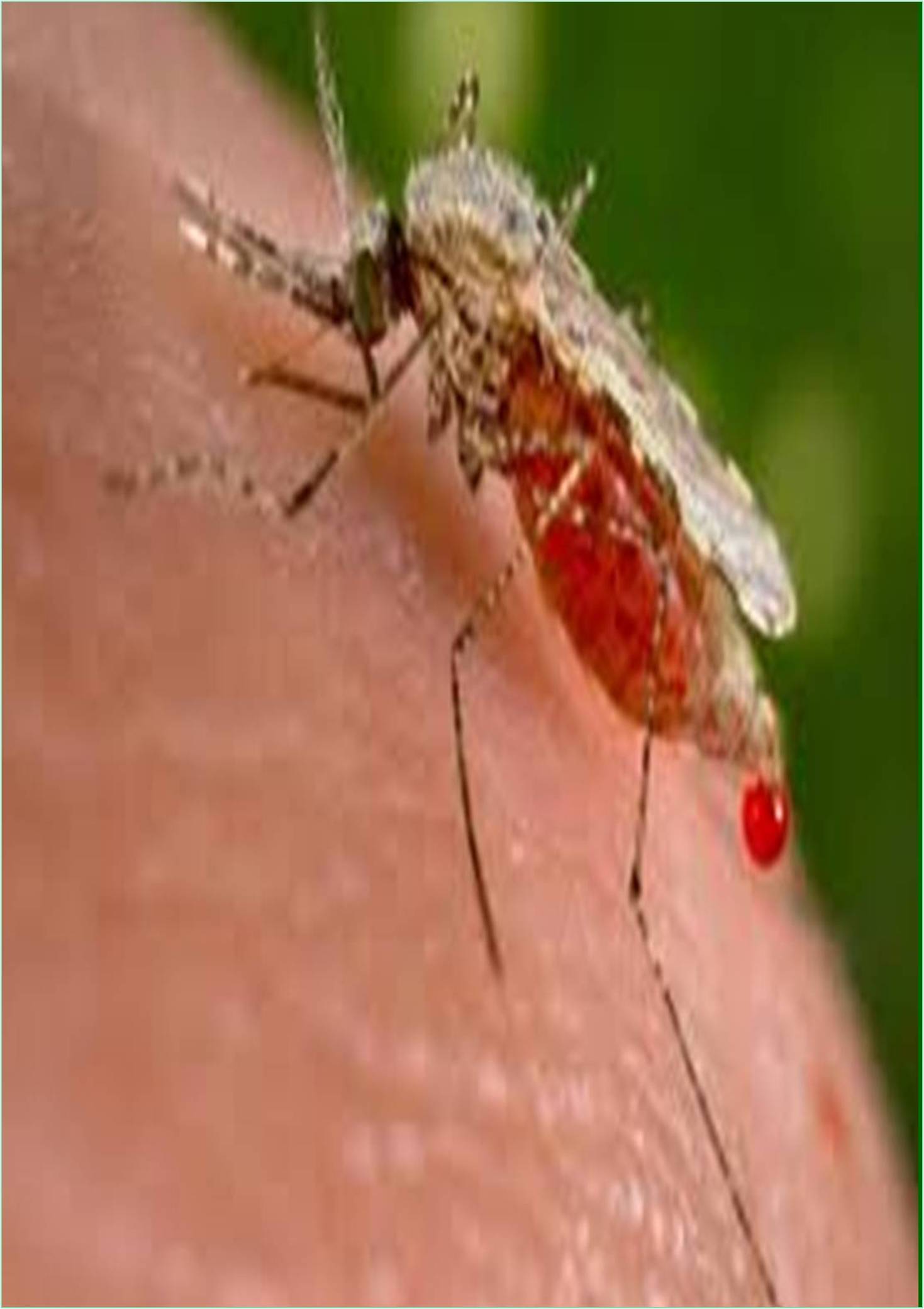



Received: 03-Feb-2022, Manuscript No. IJMAR-22-59698; Editor assigned: 05-Feb-2022, Pre QC No. IJMAR-22-59698 (PQ); Reviewed: 17-Feb-2022, QC No. IJMAR-22-59698; Revised: 22-Feb-2022, Manuscript No. IJMAR-22-59698 (R); Published: 01-Mar-2022, DOI: 10.15651/ IJMAR.22.1.1
Malaria is a parasitic infection transmitted by Anopheles mosquitoes, causing acute life-threatening illnesses and poses a significant global health threat. Each year, 2 billion people are at risk of getting malaria, including people from 90 endemic countries and 125 million travelers. The parasite plasmodium has a multi-step life cycle that results in a characteristic periodic fever. With timely treatment, most people experience a rapid resolution of their symptoms. However, serious complications such as cerebral malaria, severe malaria anemia, coma, or death can occur. The preferred treatment and chemoprevention regimen for malaria is determined by species, geography, susceptibility, and patient demographics. Latent or reactivated infections can be reported years after exposure.
Causes and Symptoms of Malaria
Malaria is caused by mosquito-borne parasites. Insects pick up parasites by biting people who are already sick. Malaria infects others when it is bitten by a mosquito. In rare cases, malaria can be transmitted from person to person, or "congenital malaria," from mother to child, or through blood transfusions, organ donations, and shared needles. Fever is the most common symptom of malaria. Other related symptoms include headache, cough, nausea, vomiting, abdominal pain, diarrhoea, myalgia or arthralgia.
Prevention
There is still no effective vaccine to protect against malaria pathogens. However, if you live or visit tropical or subtropical areas, there are several ways to protect yourself from this ubiquitous, potentially life-threatening illness of (Caminade et al., 2014). The likelihood of getting malaria depends largely on when and where you travel. Especially in sub-Saharan Africa, the Indian subcontinent, Southeast Asia, especially during the rainy season and after that, May-December is the peak month of malaria infection. Check with your local Centres for Disease Control and Prevention for disease prevention information before traveling. To manage risk, you need to know the risk level and the type of prevention recommended. Take personal protection with you. The first line of defense to prevent mosquito bites is mosquito repellents and mosquito nets. These are recommended whenever there is a risk of malaria (Gruell et al., 2017). Apply insect repellent in the evening before mosquitoes look for supper and sleep behind pesticide-treated mosquito nets. These are about twice as effective as untreated nets, and thanks to this combined approach, they provide maximum personal protection against mosquito bites.
Diagnosed with Malaria
Diagnosis of malaria is usually based on the identification of Plasmodium parasites in blood samples examined under a microscope. Rapid diagnostic tests that detect parasite-specific molecules in blood samples can also be used to diagnose malaria (Herr et al., 2011). Patients with uncomplicated malaria are not characterized by severe malaria, are symptomatic, and have a positive malaria test. Uncomplicated malaria caused by Plasmodium falciparum can quickly progress to severe malaria. Therefore, early diagnosis and treatment of uncomplicated malaria is important. Initial treatment includes immediate administration of antimalarial drugs. Severe malaria, usually associated with high blood levels of Plasmodium, can cause loss of consciousness, seizures, dyspnoea, severe anaemia, and multiple organ failure. People at high risk of serious illness include infants, pregnant people, elderly travellers, and people with the immunosuppression (Quinones et al., 1998). Although untreated severe malaria is almost always fatal, malaria mortality is less than 2% with timely and effective treatment. Patients diagnosed with severe malaria should be treated with intravenous antimalarial drugs and carefully monitored in the intensive care unit.
Treatment of Certain Infections
All patients with uncomplicated P malaria, P ovale, P vivax, and P falciparum from the chloroquine-sensitive region should be treated with oral chloroquine. This medicine is very effective, well tolerated and cheap. Treatment of chloroquine-resistant Plasmodium falciparum is complex and depends primarily on the area of the disease. Patients with uncomplicated illnesses acquired in the area of chloroquine resistance can be treated with one of several regimens that are effective against chloroquine-resistant parasites (Willocks et al., 1992). Two major regimens are used in the United States. Mefloquine or quinine and doxycycline or pyrimethamine sulfadoxine. Other effective medicines include halofantrine, Artemisinin derivatives, and clindamycin. Halofantrine and artemisinin are commonly used abroad, but are not currently available in some countries.
The prevalence of malaria in the study population was high. Environmental and behavioural factors associated with the Long-Lasting Insecticidal Net (LLIN) remain potential determinants of malaria. Proper use of bed nets, drainage of stagnant water, and on-going public health interventions aimed at raising public awareness to reduce the risk of insect bites minimize the spread of malaria and improve the health of children. There is a possibility of improvement.
Caminade C, Kovats S, Rocklov J, Tompkins AM, Morse AP, Colón-González FJ, Stenlund H, Martens P, Lloyd SJ (2014). Impact of climate change on global malaria distribution. Proc Natl Acad Sci USA. Mar 4; 111(9):3286-91. . [Crossref] [Google Scholar] [PubMed]
Gruell H, Hamacher L, Jennissen V, Tuchscherer A, Ostendorf N, Löffler T, Hallek M, Kochanek M, Tannich E, Böll B, Fätkenheuer G (2017). On taking a different route: an unlikely case of malaria by nosocomial transmission. Clin Infect Dis. Oct 15; 65(8):1404-6. [Crossref] [Google Scholar] [PubMed]
Herr J, Mehrfar P, Schmiedel S, Wichmann D, Brattig NW, Burchard GD, Cramer JP (2011). Reduced cardiac output in imported Plasmodium falciparum malaria. Malar J. Dec; 10(1):1-8. [Crossref] [Google Scholar] [PubMed]
Quiñones ML, Lines J, Thomson MC, Jawara M, Greenwood BM. Permethrin-treated bed nets do not have a ‘mass-killing effect’on village populations of Anopheles gambiae sl in The Gambia. Trans R Soc Trop Med Hyg. 1998 Jul 1; 92(4):373-8. [Crossref] [Google Scholar] [PubMed]
Willocks L, Jones M, Brettle R, Welsby P, Gray J. Changing patterns of malaria in south-east Scotland: implications for practitioner awareness and prophylactic advice. Postgrad Med J. 1992 Jan 1; 68(795):22-5. [Crossref] [Google Scholar] [PubMed]